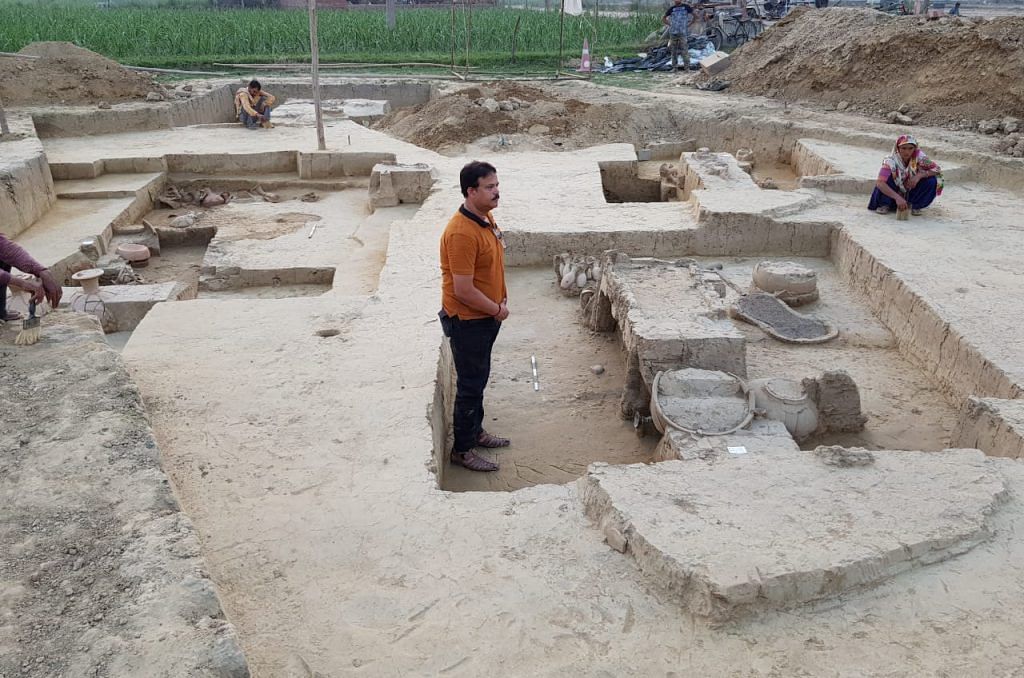The discovery in Uttar Pradesh’s Sinauli could alter the understanding of contemporary Harappan culture, says Archaeological Society of India; scholars dispute chariot claim.
New Delhi: The Archaeological Survey of India (ASI) has claimed to have found the remains of two chariots and eight well-preserved corpses in a burial chamber in Sinauli, Uttar Pradesh. Sinauli is considered an important contemporary Harappan burial site in Bagphat district.
The team, according to ASI director (excavations), Sanjay Manjul, found three of the corpses placed in pedestaled coffins, and recovered remains of the two chariots such as wheels, axles and poles, leading to speculation that those buried in the chambers may have been royalty.
The new discoveries, especially those of the chariots are a landmark moment since no such physical evidence has been found at a contemporary Harappan site, Manjul said.
“This is the very first time such evidence has ever been recovered. The coffins and chariots are something we haven’t encountered before. This discovery is not only important in the context of India, but the world,” Manjul said.
Later Harappan age
According to Manjul, the remains may be from the later Harappan period during the Copper-Bronze age.
“The artefacts probably belong to a period between 2000-1800 BCE. It can help us determine how those people lived. It may help re-evaluate how we understood the late Harappan contemporary culture. It is a significant development in the Ganga-Yamuna doab,” Manjul told the ThePrint.
He added that the coffins had carvings that are unique. “Some of these coffins have highly intricate carvings and copper plating. Especially unique are the anthropomorphic figures sketched on them,” Manjul said. “We have also recovered what looks like a mashaal (torch) that may have lit the chamber earlier.”
There have been other discoveries at Sinauli including in 2005, when the ASI recovered skeletons and pottery at the site. The burial site is also 20 km from the mythical town of Barnawa, which according to the Mahabharat, is where Duryodhana made a house of lac to burn down the Pandavas.
Claims disputed
Not everyone, however, is buying the ASI’s claims, particularly on the ‘chariots’.
Ruchika Sharma, a history doctoral scholar at JNU, says the ASI has to clarify its findings. “We should first obtain clarity on why ASI is calling them chariots. It isn’t uncommon for a late Harappan site to have bullock carts. There is already evidence of such terracotta carts,” she said.
“ASI has a tendency to colour their discoveries from the lens of Hindutva. They had earlier interpreted female figures as ‘mother goddesses’, even though there was no evidence to suggest it.”
“It is very unlikely that they are chariots,” she said.
